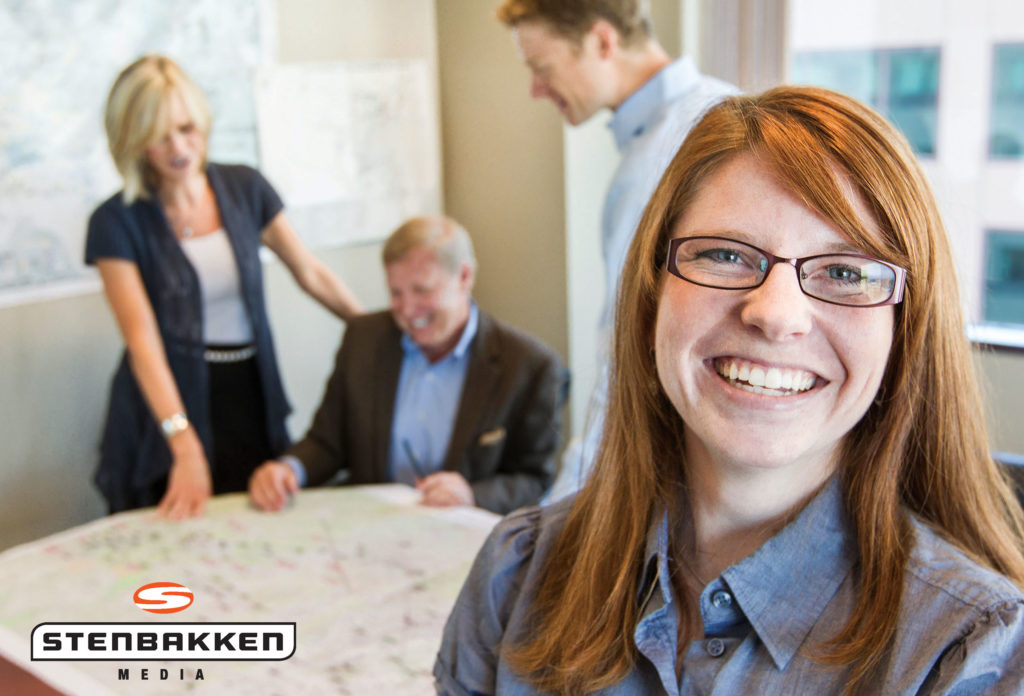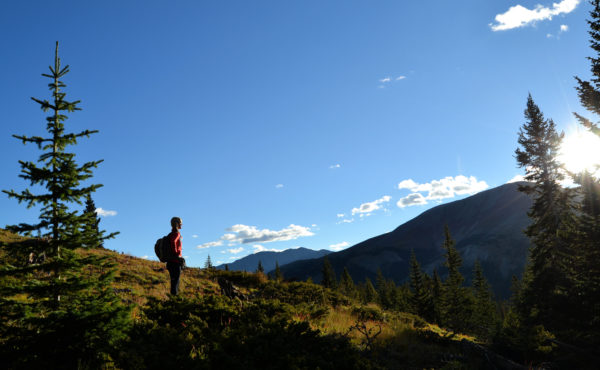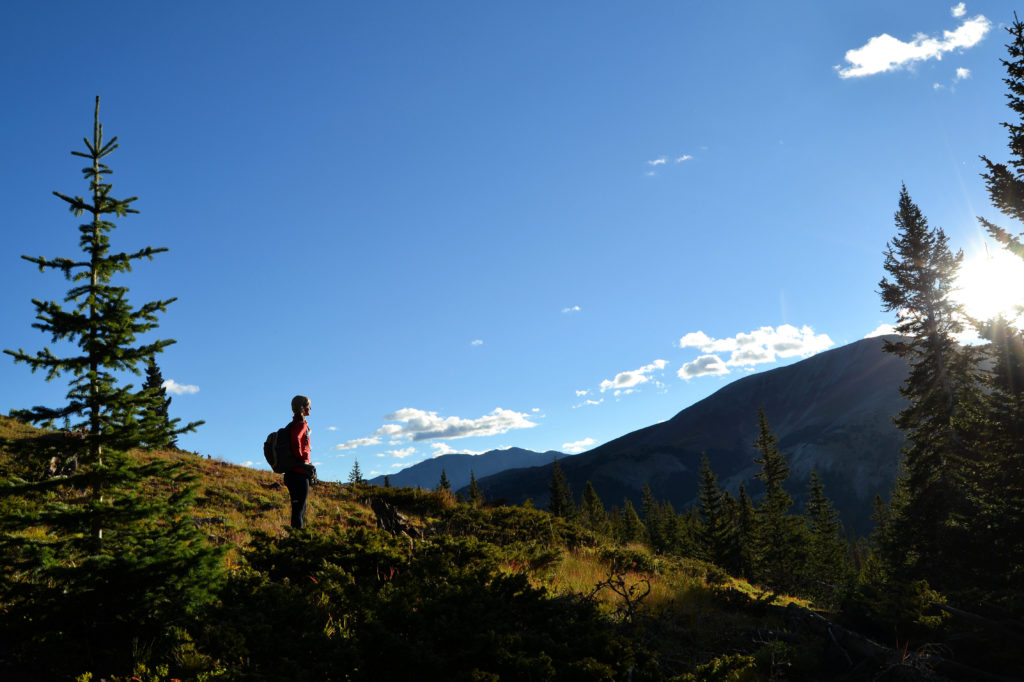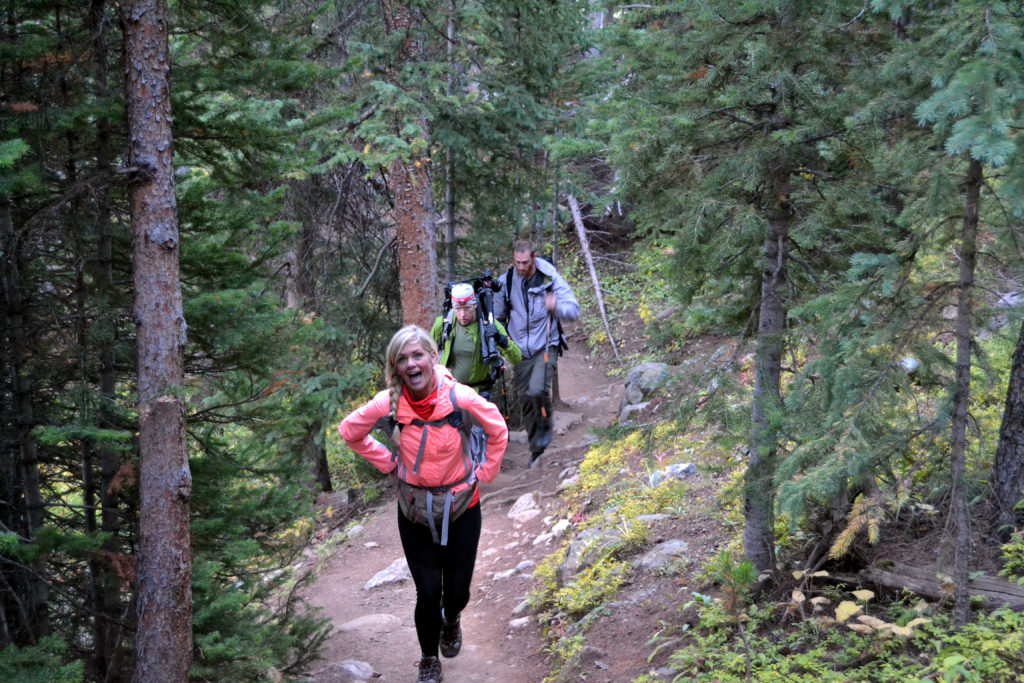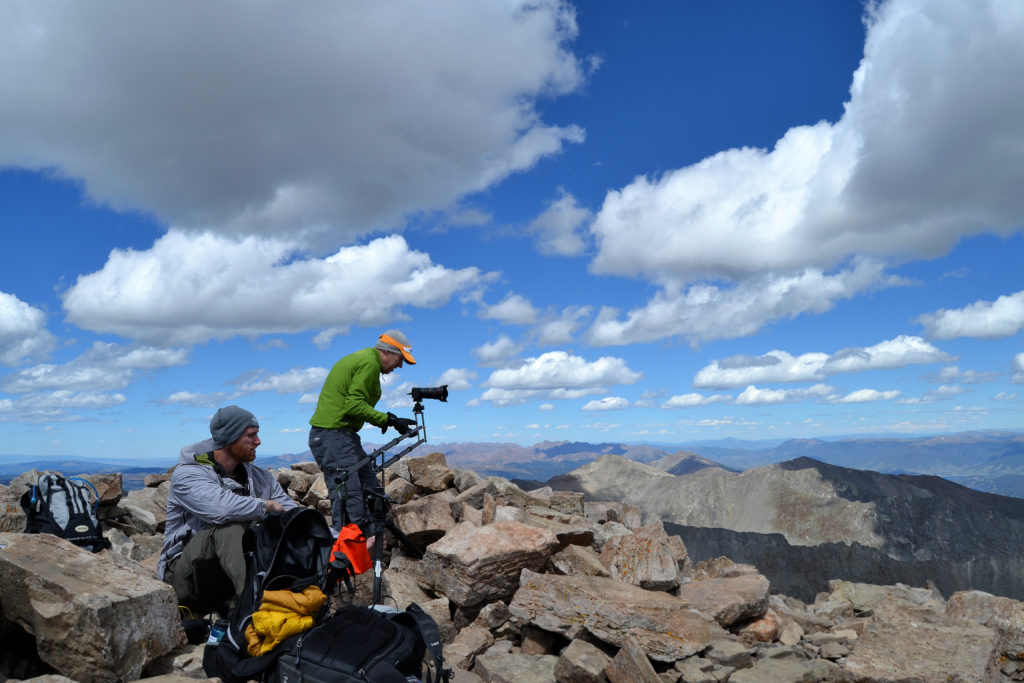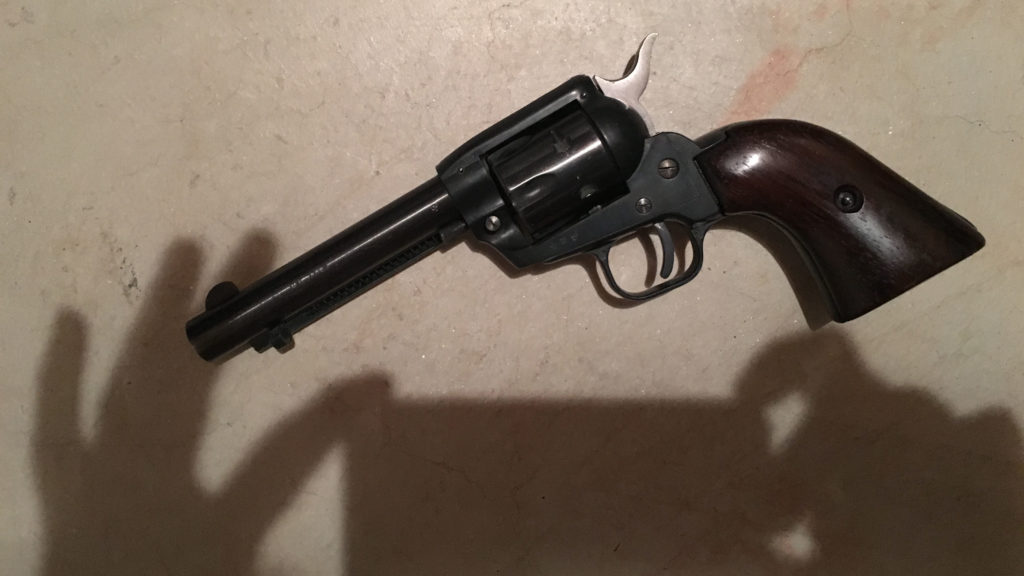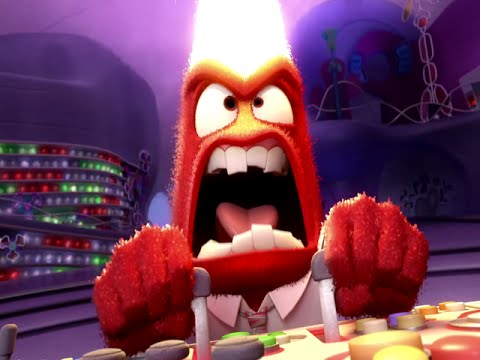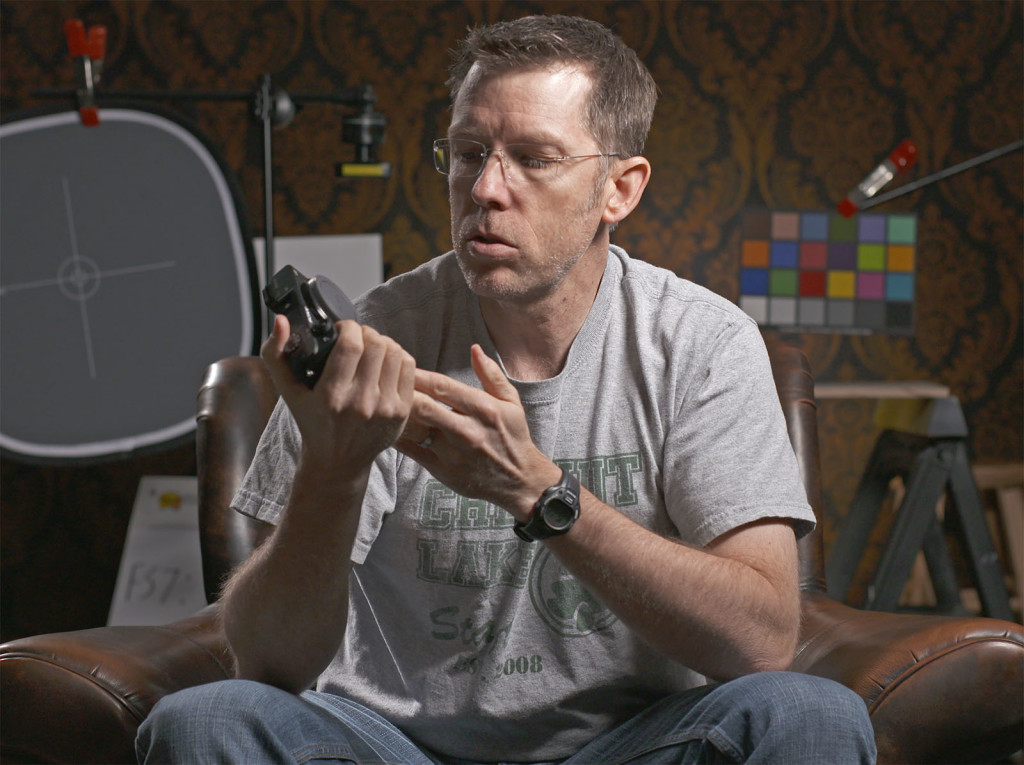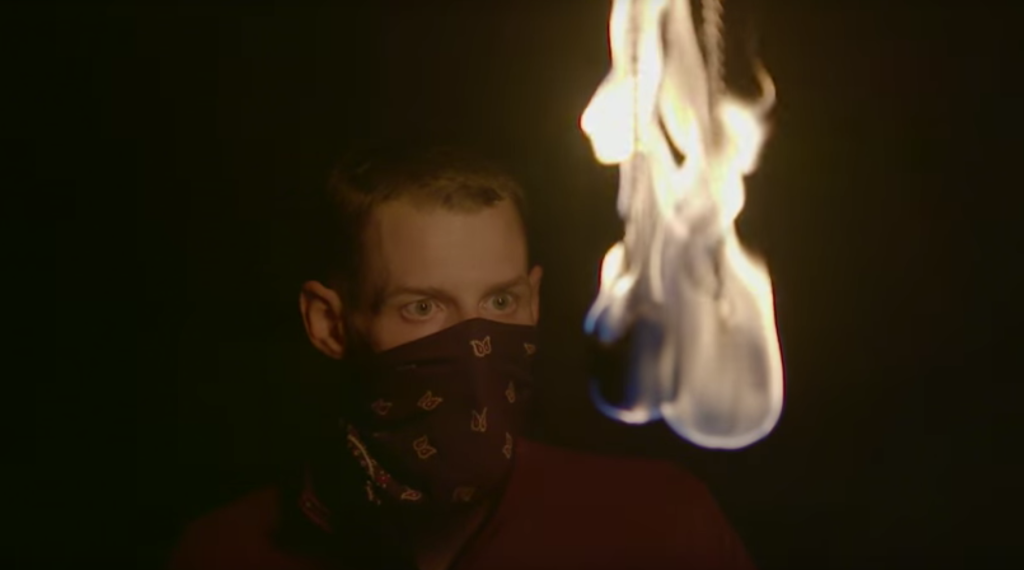14
2018You have made those repairs and staged your home. Why now would you skimp on quality photography to sell your home? Sellers who want to attract more interest and potentially receive multiple offers would do well to invest in professional level photos of their home.
Understand why high-quality photos are a necessity in today’s market today.
Home Buyers and First Impressions
Online photos are the first time visitors have a chance to see the layout and features of a home. There has been a rise in potential buyers going online to view listings. Visitors are viewing homes on a number of platforms and across devices, including laptops, tablets and mobile phones. Those who want to engage these visitors realize the need to upload high-quality photos of the interior and exterior of a home that serve as a virtual walk-through of the property.
Selling and More Views
How much of a difference can be expected with the use of professional level photography? It has been seen that such photography can attract 61 percent more views, on average. Property owners who use professional photography to sell a home often benefit from a higher asking price and move their property faster than those do not take this route. Sellers appreciate the ability to potentially shorten the home selling process and walk away from a sale with the possibility of more money in their pockets.
Buyers Need to See Your Home
Photos help provide visual information about a home. Before even scheduling a first showing, potential buyers use photos not only when beginning their search but also return to them when looking to recall specific details and make an offer on a home. A professional shoot of a well-staged and maintained home can make a marked difference for a seller when it comes time to market a home and attract interest and for buyers when they are making an offer. Low-quality, blurry and dimly lit photos can make it hard to actually see the features of a home. Make it easy for visitors to see the property being sold and get the best price possible for a well-maintained home.
What Do Sellers Want?
Do sellers want their home to linger on the market and draw little interest due to poor-quality photos and a small pool of visitors? This may happen when cell phone photos taken by sellers or their agents are uploaded to a site. Good photos using professional equipment help broaden a seller’s reach and increase interest in a home. Multiple offers can drive up the final price of a home and a seller may get more than the price they anticipated with a little investment in high-quality photography. This heightened interest and competition among buyers may make for a shorter time for a home to be on the market before being snapped up by a qualified buyer. It is possible to sell faster with a small investment into quality photography.
Attract the right buyers for a home. Get more visitors to an MLS listing and to the property itself. Provide the details needed easily to potential buyers when they are searching for a new home or an investment property. Do all of this with high-quality photography today.
03
2018Recently, I posted a vlog (here) of my top three tips on how to prepare for a business meeting. I also posted a blog (here) that expanded on those top tips with a few more. I’ve been a freelancer for well over 20 years now, and if I can save someone the years it takes to learn these types of professional details, I’ll consider that time well spent.
School is great for learning how to hone your skills, but it oftentimes takes experience on the job to learn some of the finer points of how to get work done in the real world.
Here a summary of the top three tips from the vlog:
1) Listen
Really listen to the client. What do they need? People in business usually know what they think they need. But you, as a freelancer, may listen to them describe their project and understand a different or supplementary way to get their job done better. You are their professional resource in this way, so listen. And speak up.
2) Don’t Quote Money
By all means, bring your rate card and share it. But don’t develop a custom quote for a client on the fly. You owe it to both them and yourself to give an accurate, well-developed quote for what they’re trying to accomplish. If you quote too high, you lose. And if you quote too low, you lose. A good quote is a matter of respect for everyone involved with the project. Don’t be afraid to tell them that.
3) Boundaries
Guard your boundaries and be clear. Examples:
- Time: Arrive on time and be ready to end on time. If you have time constraints, say so up front so everyone knows what to expect.
- Meals: If you’re meeting for lunch, know who’s going to be there and who is expected to pay.
- Knowledge: Stick to what you know. If you don’t know the answer to a client question on the fly, say so. Tell them you’ll research it and get back to them. Then do it. You being a reliable resource is more important than giving them an answer right now.
Bonus Points for Readers
What other things should you make sure you do during a business meeting? Here are some:
- If you have to leave by a certain time, set a silent alarm on your phone for 10 minutes ahead of that time. You don’t want to rush out the door in mid-thought in a panic.
- Other than the above situation, avoid having your phone out during a meeting. There might be a moment when a “we all need this,” item arises (looking something up or setting your next meeting), but other than that, put your phone away.
- Have relevant questions for them. It will show them you get who they are and what they are trying to do.
- If you have a mailing list, ask if they’d like to be on it.
- Ask for referrals for other similar types of projects. They may know of another branch of their institution or people in the same line of work that are looking to get some work done also. People know people. And positive word of mouth will get you hired faster than the best portfolio in the world.
- Bring relevant leave-behinds: business cards for everyone in the room, copies of your rate card, pens with your logo on them, or whatever else you have that will help create that all-important “top of mind awareness,” for you and your work.
- Designate who will do what after the meeting. Are they supposed to make a decision and let you know what it is? Are you supposed to research something and get back to them with a proposed bid or some information? Make sure everyone knows what they’re supposed to do next and who they need to communicate to.
- Send them a thank you after the meeting for the meeting itself – at least 24 hours after the meeting. Even if the meeting doesn’t end up resulting in work for you, they took time out of their schedule to talk to you and you’re still a freelancer. They may need you in the future and you want them to remember you positively.
- Take care of your follow up. No excuses.
Undoubtedly There’s More Out There
You may have learned different things than I have over the years. Wading through the murky waters of professionalism and prosperity in the freelance world can be tricky! Please share any tips you have in the comments below.
02
2018As a freelancer, getting meetings with a prospective client is the holy grail – second only to getting the work itself. But, knowing how to appropriately plan for those meetings isn’t taught in school. Doing meetings well can make or break your opportunity to get work. Here are my top three tips for preparing for a business meeting. This is your homework before you even get a meeting.
For those of you who prefer reading to vlog-watching, here’s a quick summary of the top three:
1) Do your homework.
Who is your client? What do they need or want to thrive in their industry? And specific to their current situation, are they ready to have a meeting? If so, about what? Who are the decision-makers and will they be at the meeting? You’ll want to make sure you can speak to the client’s needs and have the right players in the room to get real work done.
2) Dress for success.
Many companies have nice t-shirts with their logos printed on them. Those are practical and great if a nice t-shirt is appropriate for the client you’re meeting with. If you knew you were going to photograph one of the top people in the business world, wouldn’t you dress up a little? Seriously—dress for success. You will be judged on how you look.
3) Logistics.
Map out the location and route to the meeting in advance. Don’t rely on your phone’s GPS—sometimes there are tricks to finding a building. And a phone can’t give you notes on finding parking or which door to use. Get clarification from your client and check it out before you go.
Bonus Points for Readers
Here are a few more tips on how to prepare for a business meeting:
- Take your client’s contact information with you. All the preparation and mapping in the world won’t keep you from getting stuck behind a traffic accident or getting a flat tire when you least expect it. Have a way to get in touch and let them if promptly if you are going to be delayed.
- Value people’s time—including your own. That means don’t cancel unless you absolutely have to; and if you do have to cancel, cancel as far in advance as you can. On the flip side of that, if the meeting was set up two months out, call and confirm it’s still on the calendar and moving forward.
- Bring your collateral. You’re a professional about the enter the room where you might meet a half a dozen higher ups from this company you are trying to woo. Make sure you have enough collateral with you to hand out.
- Take your portfolio—and test it. Most of us have our portfolio on an electronic device of some sort. Make sure your device is fully charged, bring your cords and adapters, and test your software before you go to make sure it works smoothly.
So There You Have It
The business rule of thumb is that you should spend about as much time preparing for a business meeting as you spend in the meeting itself. Spend that time making sure you know your client, your location, your wardrobe requirements, your client’s contact information, your schedule, your professional collateral, and your portfolio.
11
2017Back in September, the whole crew here at Stenbakken Media went to Breckenridge to interview Kristina Bushman and climb fourteener Quandary Peak with her, filming as we went. A fourteener is a mountain that’s 14,000 feet tall or taller.
(For those of you who haven’t been following the story, here’s the quick version: Kristina suffered from an eating disorder that grew over the years until it was extremely destructive. As part of her recovery process, she came to Colorado from Minnesota in the summer of 2015, and climbed all 55 fourteeners in 87 days. Yes, you read that right: 55 fourteeners in 87 days!)
Next week we are releasing the video we made on the trip, so keep an eye out for it. But in the mean time, we staff have been recollecting our experiences of the interview and climb.
Erik (master of all things, and general brains behind the operation):
I’ve climbed something like 23 different fourteeners and while I can say some are easier than others, there is no such thing as an easy fourteener. They are all work. And carrying a load of video gear up to the summit (while trying to tell the story itself) is a challenge for sure.
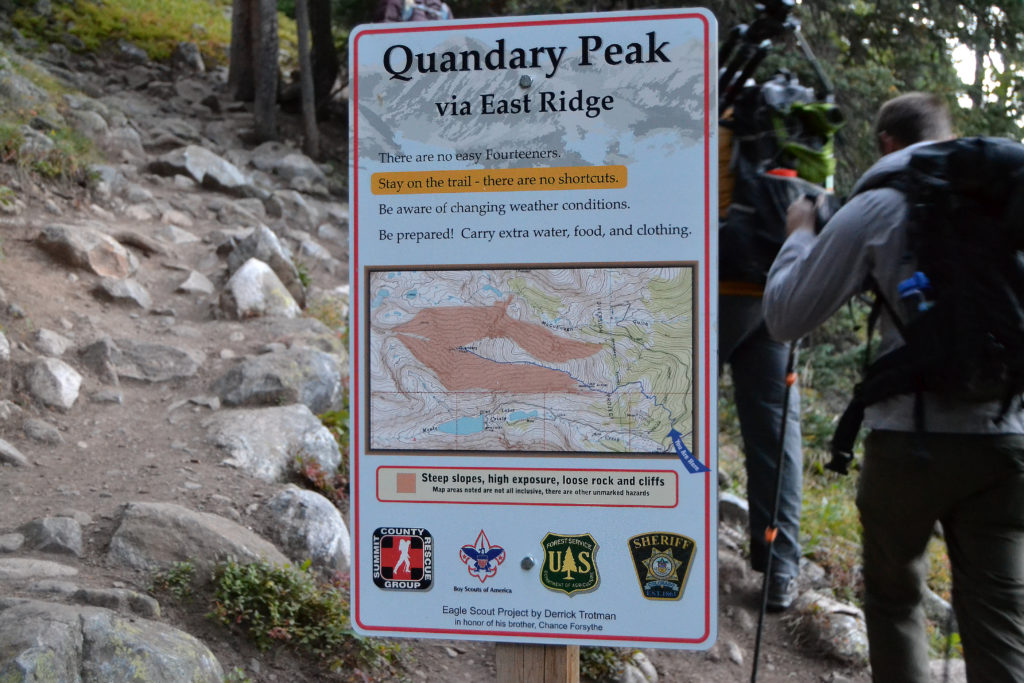 It may seem like a small detail, but I forgot my sunglasses the morning of the hike. On a sunny, windy day that high up, it hurts. My eyes stung for days afterward.
It may seem like a small detail, but I forgot my sunglasses the morning of the hike. On a sunny, windy day that high up, it hurts. My eyes stung for days afterward.
I had hoped that since I live in Colorado and Kristina was coming out from Minnesota that she’d be a bit slower. Nope. She never seemed to need to stop—at least not given all the stops WE had to make for filming.
We met Kristina for the first time in Breckenridge over lunch. As we sat and talked, I was struck with how “regular” she was. That’s not a dig at all. But after hearing of her struggle with the eating disorder and her triumph over 55 summits (in one season!) I was prepared to meet some kind of superhero or the like. Turns out she’s a regular human after all, and one I liked even more after hanging out, shooting the interview, and climbing the fourteener with her.
 One of the things I admire most about Kristina is that she’s willing to put herself out there. That is, she is willing to say, “I struggle. I struggle with this: ________ and I’m fighting it and winning and you can too!” It’s the last part that is so attractive. She’s chosen to take her struggle and take those lessons and hard-won victories and present them for others to use as leverage in their own struggles.
One of the things I admire most about Kristina is that she’s willing to put herself out there. That is, she is willing to say, “I struggle. I struggle with this: ________ and I’m fighting it and winning and you can too!” It’s the last part that is so attractive. She’s chosen to take her struggle and take those lessons and hard-won victories and present them for others to use as leverage in their own struggles.
The climb was most memorable because although Karen and Lance were having health issues, they both pressed on to the summit too. I’m glad I was there for that win!
Lance (first assistant, boom boy, and general lifter of all things heavy):
After we met Kristina and had lunch in Breckenridge, we needed to find a quiet, secluded spot with a nice view to film her interview. Finding a good spot turned out to be harder than we thought it would be. We ended up finding a place with a nice view for the background, but had to keep stopping filming/recording because of nearby dirt road noise and dust.
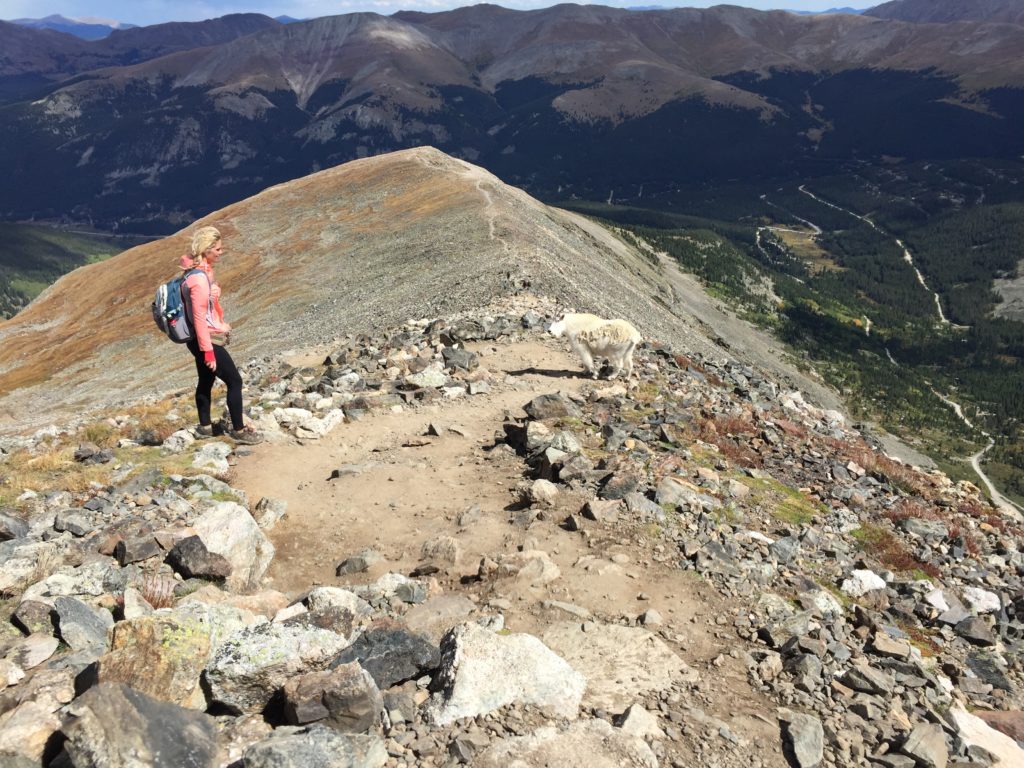 I’ve climbed a few fourteeners, but never before has the hike taken all day. I usually start well before sunup and am back down by 10 a.m. But this day, it took far more time (because we kept stopping to film and usually get each shot twice to make sure we had a good take), and far more energy (because of carrying gear, so much stopping and starting, and hours of sun and wind exposure). It was exhausting!
I’ve climbed a few fourteeners, but never before has the hike taken all day. I usually start well before sunup and am back down by 10 a.m. But this day, it took far more time (because we kept stopping to film and usually get each shot twice to make sure we had a good take), and far more energy (because of carrying gear, so much stopping and starting, and hours of sun and wind exposure). It was exhausting!
When I hike fourteeners, I get altitude sickness every time. For me that takes the form of a killer headache that is so bad it’s disorienting. I did everything you’re supposed to do when you climb a fourteener: snack frequently, guzzle lots of water, etc., but it wasn’t enough. Hiking at high altitude pushes you to your limits anyway, but add a huge headache, pounds of gear, and hours of time to it and it was a hard day!
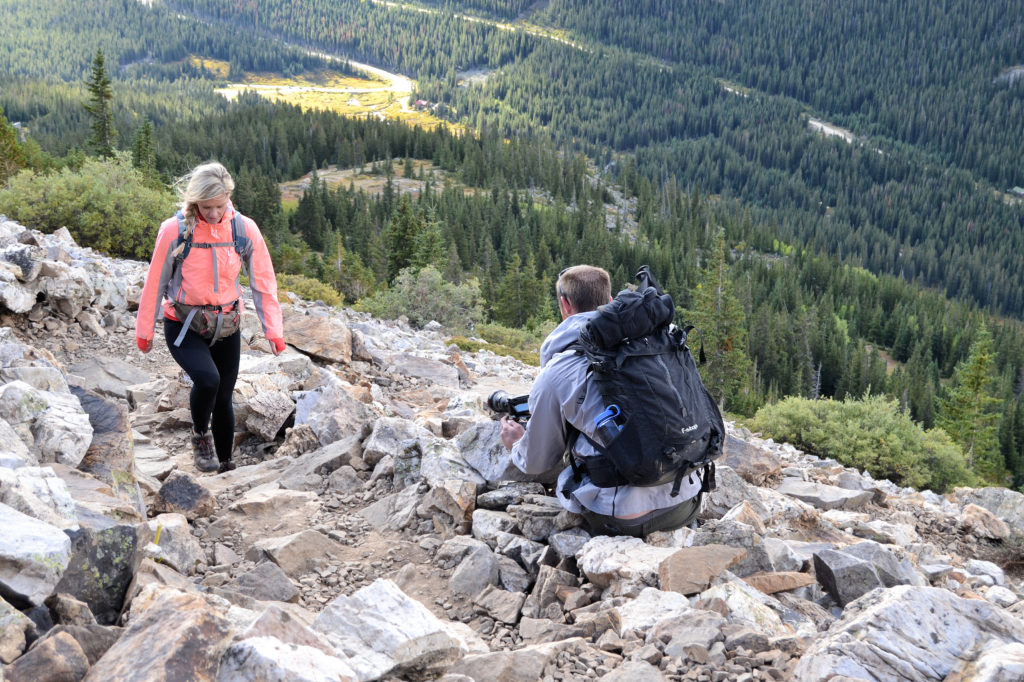 The entire trip was totally worth it! I enjoy the challenge of 14ers, and it was a blessing to hear Kristina’s story and help her share with others. Listening to her talk during the interview, I thought over and over again how distinct each person is. The fact is, we rarely know the people around us. Everyone has been or is going through some sort of big battle in their life and that battle has changed them for better or worse. Kristina’s one of the strong ones who has come thru the worst of her struggle better for it.
The entire trip was totally worth it! I enjoy the challenge of 14ers, and it was a blessing to hear Kristina’s story and help her share with others. Listening to her talk during the interview, I thought over and over again how distinct each person is. The fact is, we rarely know the people around us. Everyone has been or is going through some sort of big battle in their life and that battle has changed them for better or worse. Kristina’s one of the strong ones who has come thru the worst of her struggle better for it.
Karen (office staff, bookkeeper, odds-and-ends manager):
This hike with Kristina was exciting for me because I’d never hiked a fourteener before. I got to be part of telling an inspiring story AND try a cool new thing. I have a connective tissue disorder that makes me a little fragile and I’ve broken both my feet before, so I was leery how well I would do, but excited!
 The interview was fascinating. I wish there was a way for each of you to hear Kristina’s entire story uncut, but between length, road dust and noise, and the gunfire that started up somewhere in the valley as we interviewed her, a lot had to be cut out. (Gunshots do make for a dramatic story, but it’s not the one we’re trying to tell here.) Her blog, www.sunshineof1985.com, documents all 55 summits as she climbed them, and there are a ton of great pictures and stories you can check out there.
The interview was fascinating. I wish there was a way for each of you to hear Kristina’s entire story uncut, but between length, road dust and noise, and the gunfire that started up somewhere in the valley as we interviewed her, a lot had to be cut out. (Gunshots do make for a dramatic story, but it’s not the one we’re trying to tell here.) Her blog, www.sunshineof1985.com, documents all 55 summits as she climbed them, and there are a ton of great pictures and stories you can check out there.
The hike was hard! It was fine for a few hours, but once my feet reached their limit, it hurt pretty badly. At one point, with the summit in sight, I was ready to turn around and go back down—I just couldn’t imagine pushing to the top and still having to do the return hike. But Erik, with his endless energy, came bounding over the rocks and took my bag so I could finish the climb with no extra weight.
No matter how many times we said to Kristina, “Hey, would you hike back down the mountain and then hike back up past us so we can film you?” she did it with plenty of energy and a ready smile. She said several times over the course of the day that all those climbs taught her that even when you feel like you can’t go another step, just keep putting one foot in front of the other. You’ll get there.
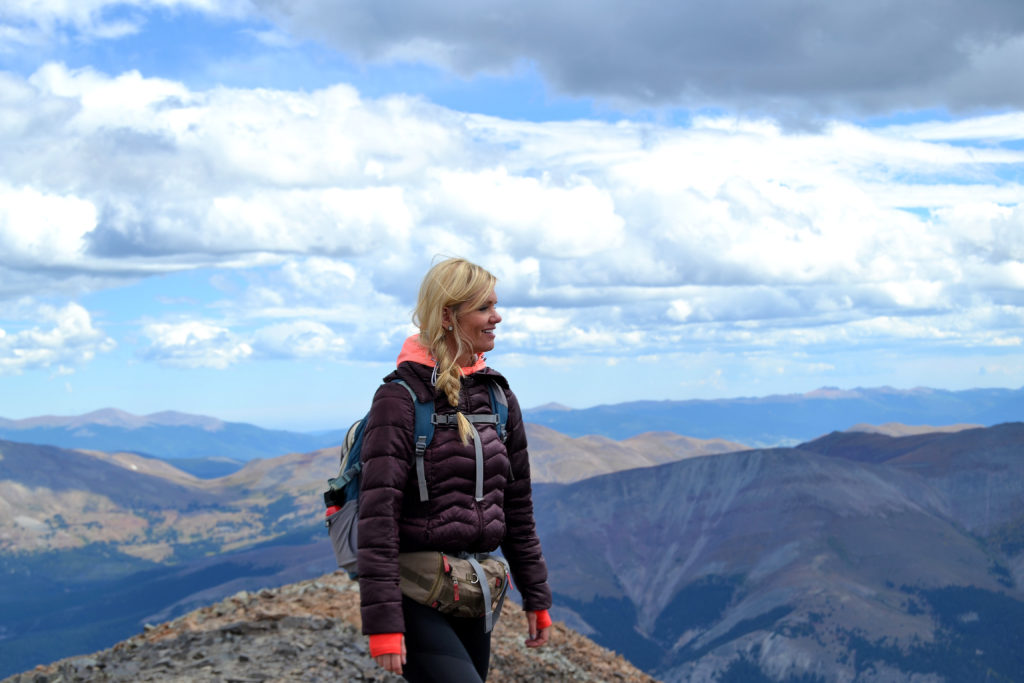 Sure enough, eventually we were all at the summit—bundled up against the brutally cold wind and eating Pop Tarts. As you can see from the footage we shot from the top of Quandary, the view is breathtaking!
Sure enough, eventually we were all at the summit—bundled up against the brutally cold wind and eating Pop Tarts. As you can see from the footage we shot from the top of Quandary, the view is breathtaking!
Next Week
Enjoy the pictures here and on Instagram and Facebook, and check out the video when we release it next week. Kristina’s is a very inspiring story. She’s overcome seemingly insurmountable odds to regain her health and true self. Her lesson is simple: If she can do it, you can do it. Reach out for help and find a way through. Next thing you know you’ll be at the summit.
26
2016One Woman’s Struggle with Bulimia and Altitude
If you’ve ever wondered what it’s like to hike up a 14er in Colorado with an extra 20 pounds of expensive camera gear strapped to your back, just ask us. We’re here to tell you…it’s a challenge!
If you’ve ever wondered what it’s like to survive an eating disorder and come out the other side of it healthier in all ways—physically, mentally, and spiritually—just ask Kristina Bushman. She’s here to tell you…it’s a challenge!
Probably one of the biggest she’ll face in life.
Here at Stenbakken Media we are proud to be putting together a documentary about Kristina’s story called “Kristina’s Mountain.”
What it’s About
In 2015, as part of her recovery process from bulimia, Kristina Bushman came to Colorado from Minnesota to climb 55 14ers in one season (for those who don’t know, a 14er is a mountain that’s 14,000 feet tall or taller). That’s a pretty tough undertaking for anyone, much less someone from a sea-level state. Much less someone struggling with an eating disorder. Much less someone recently out of an inpatient facility, whose family and support network definitely did NOT think her plan was a good idea.
Nonetheless, Kristina was determined to do it. So she did it.
A Survival Story
There’s something very compelling about a person overcoming tremendously heavy odds and completing a self-set goal that is this difficult. We are excited to share Kristina’s story as seen through our lenses. During the documentary process, we interviewed her in Breckenridge, one of the mountain towns she traveled through, and climbed Quandary Peak alongside her.
The Logistics
And so the fun began! The climb was abnormal by anyone’s standards. The crew was loaded down with extra pounds of gear, and we were constantly looking for good shots to set up, then stopping, setting up cameras and having Kristina go back down the trail and come by again so we could film her.
Poor Kristina had to climb many sections of the mountain more than once so we could get good footage of her. Double and triple climbing notwithstanding, she maintained a good mood all day and was patient with our constant need to stop and set up all the equipment.
Geeking Out for a Moment…
The photographer nerd that lives inside us has to take a moment to share the gadgets we took along on the trip. For the interview portion of the trip we set up two cameras, a Sony FS7 and a Sony A6300, a shotgun mic and slider, and battery-operated LED lighting.
For the climb, we took along a DJI Osmo, the Sony A6300 camera with three zooms taking us from 8mm to 105mm, a carbon fiber tripod, and carbon fiber jib.
Some Perspective
Lest you have any illusions that the average person can just climb a 14er on a whim with no issues, we the crew have to own to how hard Quandary was. All of us are Colorado residents, are in reasonably good shape, and all but one of us had climbed 14ers before. All that said, we struggled that day (in various ways and for various reasons). Make no mistake, what Kristina did is hard! She’s a strong woman who deserves a lot of credit for not only setting herself this goal, but completing it.
Stay tuned for a future blog that includes behind-the-scenes interviews with the crew about the experience.
17
2016There are lots of photographers in the world. The ubiquitous GWC (Guy With Camera) is everywhere offering a “really good deal” on what they assure you will be the photographs or video of your dreams.
So if there are so many people available to shoot your wedding/business/advertising, why should you pay a professional? What are the benefits to you?
Obvious Answers
There are a million blogs out there that will regale you with all the top reasons to hire a pro. Things like:
- Quality
- Consistency
- High-grade equipment
- Experienced creativity
And yes, all of those things are important. But there are also some background reassurances that go into being a professional. Things that, while invisible to the customer, are part and parcel of providing professional services in the digital world.
Not-So-Obvious Answers
- Redundant backups: This cannot be stressed enough. Here at Stenbakken Media your digital files are backed up multiple times on separate hard drives. Your files are safe no matter what.
Yes, those extra drives cost us money, but preserving a client’s product is part of being a professional.
- Insurance: This includes
- Equipment insurance
- Workers compensation insurance
- Professional liability insurance
If something goes wrong on a shoot and people or equipment are damaged, the fallout can be expensive. It is the professional’s responsibility to insure their own staff and equipment so that in the event of a snafu, no one comes to you with their hand out, needing you – the customer – to pay for something that happened while shooting your project.
Yes, these policies cost real money that the professional has to pay whether they are doing jobs or not. But a professional photographer or videographer carries the insurance anyway, and can provide you with certificates of insurance (COI) before any shoot.
- Licensed Software: Digital photography and videography requires software to manipulate and perfect it. And a professional photographer or videographer will have licensed software to be able to complete that work. Don’t risk your files getting caught up in a software audit. When you hire, hire a photographer or videographer that works above-board.
Yes, the licenses are ongoing and expensive, but they are part of being a professional in the field. Expect it from any professional you hire.
- Speaking of above-board… Everything a company does should be ethical and transparent. They should be able to explain to you why they charge what they charge and what you can expect for your money. Contracts should be up front and easy to read so that both parties are clear on expectations.
At Stenbakken Media, we are here to produce great work that we are proud of. We want you to be excited with the results too. Just remember, there are lots of important parts that may go unnoticed at first – but add real value and protection for our clients.
We maintain all of the things listed here (including the Obvious Answers listed above), and yes indeed, those amounts do go into our overhead, but they also go into our value. All aspects of a professional shoot are covered, from the smallest camera cord to the final work we produce. We work hard to make your job as safe as we can and still be competitive.
03
2016When marketing your business to a world that could pretty much care less, your brand is crucial. It must be unique, catchy, and memorable. Ideally, your brand presents a strong impression of who you are and what you’re about.
And then there’s your company’s voice. That voice continues your message past the first blast of branding and into your blogs, Q&A, and advertising.
Examples…
Want to buy a revolver?
Oh boy…that’s sexy! What voice is transmitted here?
- I am gorgeous
- I am classy
- Start saving your money
- I’m worth it
How about this one?
How about this voice? Can anyone say sketchy?
Two photos of revolvers. Very different voices!
Don’t Take that Tone with Me!
Statistically, you have 10-20 seconds to convince people to stay on your site – that’s your branding and web design’s job. After that, your voice must keep your visitors there.
You’ve put a lot of care into your logo, tagline, and website design. Continue that care with your ongoing voice to maintain resonance and eliminate dissonance. One business blogger describes the reaction from an audience to a dissonant voice as, “Don’t take that tone with me!”
When your voice causes your audience to draw back like that, they will vote with their feet – or maybe more accurately, with their mouse finger. They will disappear to shop elsewhere faster than you can say, “But wait…”
Elements of Voice
Forbes defines the elements of a business’s voice as:
- who you’re speaking to,
- what you’re saying, and
- how you’re saying it.
One writer put it this way, “Online, your voice is who you are. Readers take that voice and construct their sense of your identity around it.”
Better make sure yours is accurate.
Stenbakken Media
When you hire Stenbakken Media to do a shoot for you, you can expect us to ask a lot of questions. Questions about your company, its history, its goals, its audience. We need to really understand your voice so that we can capture it accurately and let people really understand what you have to offer.
There are a lot of commercial and creative projects out there for a professional photographer and videographer. The ones we like to spend our time on and the ones that are the most successful are the projects where the vision is clear and the voice distinct. Give us a good target like that and we’ll hit it every time. You can browse our client feedback and portfolios for evidence of the quality we deliver.
There are plenty of voices out there waiting to be heard. Make sure yours reflects your business as it should.
20
2016How much does it cost to create a video production?
The answer is: it all depends… Costs can easily range from $500 to $500,000 per minute. The answer simply isn’t simple.
It’s easy for a potential clients and professional videographers to get frustrated with each other during the bidding process. There is one reason for this frustration: the job isn’t clearly defined.
Let’s Start with the Client
Why does a client contact a professional videographer? Typically, it’s to request a bid for a job they want done. A common initial contact goes something like this:
Client: Hello, I want to make a promotional video about my company, can you give me an estimate of how much that would cost?
Professional: Can you give me a little more information about the video you want?
Client: I want videos that promote my business to potential customers.
Professional: Videos. Okay, how many? And how long do you want them to be?
Client: Maybe between 3-10 minutes each?
Professional: Where are you going to use these videos? Will you put them on your website? Show them on TV?
Client: A TV ad would be good. Look, I just want a few videos that I can use for TV and on our website. And I’d like to incorporate our logo into it with some motion graphics. How much does something like that run?
It’s a problem for the client when the job isn’t clearly defined because they can’t get a clean number.
Moving on to the Professional
In the mean time the professional is searching for parameters that will guide him in giving an anywhere-near-accurate bid.
- The average documentary costs $2-3,000 per minute to produce;
- A hit TV show costs about $87,500 per minute to produce;
- The last few Pixar films have averaged about $1.3 million per minute to produce.
See the problem? Vastly different costs – all in the same field. If you, the client, want an accurate bid, then you need to present an accurate view of the project.
If you don’t have an accurate view of the project, then you need to say that directly so the professional understands that you need help defining the project from the ground up.
It’s a problem for the professional when the job isn’t clearly defined because they can’t give a clean number.
Some Questions You Should be Prepared to Answer
- What length do you want your final product?
- What is the complexity of the project? (Think number of locations, b-roll, and how many people you want to see on-camera.)
- Will there be on-camera interviews? If so, do you already have scripts ready?
- Are there additional expenses such as a drone operator, equipment rental, permits, and props? Who is doing the pre-production?
- Can you describe the tone and feel of the piece? Do you have music in mind or will we need to find it?
- What type of graphics or logos will be involved in the project?
- If at all possible, show examples of what you like and what you don’t like. Pictures really do say a thousand words, so plan on playing show and tell.
- Be prepared to give an expected desired turnaround time for the project.
- Know what your budget is. Really truly. Both your desired budget and your absolute budget.
And So They Lived Happily Ever After…
As with most situations, the key to success is good communication. Come to the discussion table as prepared as possible, be ready and willing to go round up a few answers to things you hadn’t thought of, and you will be pleasantly surprised by how smooth and accurate the bid process becomes.
31
2016Have you ever read the comments at sites that regularly release information about new video equipment? Sometimes they’re insightful. Sometimes thought provoking. Sometimes, it makes me wonder, What in the heck are people thinking? So, as a tribute to the latter type of commentator, I did a review of my new Sony A6300, just in time for April 1.
12
2016Why film someone spinning fire poi? Well…because fire is pretty. And as a still and video photographer, at the root of things I’m in this business because I admire stunning visual art. Plus, I have had a Sony PXW FS7 and I wanted to see what good slow motion would look like… and let’s face it, spinning fire is more interesting than watching me toss a ball up and down.
Most of my work is for commercial, advertising and editorial clients. I love what I do, and it opens doors to meet amazing people, see interesting things, and in the end, help convey their message clearly and effectively.
But back to fire. Yes. The fire. Fire is pretty. And not everything has to be about the bottom line. So when a fire spinner I know came through town for a family visit, I snagged him. I just couldn’t pass up the opportunity!
Here Are a Few Things I Learned About Spinning Fire
1. It’s hard to shoot indoors. The original idea was for an outdoor shoot, but outdoor shoots require cooperative weather – which we did not have. At all. And since spinning fire in a snow suit is no bueno: we had to do it indoors.
2. The smell of kerosene takes a while to fade from your indoor studio. Three cheers for a smart spinner (Raymond Moore), who knew how to remove excess fuel from his poi before starting a new spin! Yes it makes for a shorter burn, but there was not a single drop of flame or fuel that ended up on walls or floor. Amazing control.
3. One small wobble in the spinning can result in very singed whiskers for the spinner. After one fast spin around the back of his neck, Raymond commented, “Well, there went some beard…” It took a split second in real life, but later when we watched it back in slo-mo, the ball of fire rolled right across his cheek. Yikes! You definitely have to know what you’re doing with fire! He wasn’t burned, but he did get a shaggy shave.
4. Not much beats fire in slow motion. I mean, I knew fire was beautiful, but seeing it in slow motion in the hands of an expert and spun over hot music takes it straight to mesmerizing. I’m betting you watched parts more than once.
Here Are a Few Things I Learned About Shooting a Fire Spinner
1. If the stunt is going to look good, you have to have an excellent stunt artist. Anything done on camera has to be done with more precision than normal (because the screen shows it over and over), but in slow motion, it has to be even tighter.
2. It’s faster than it looks. To point above, as we were shooting, I really didn’t know WHAT I was seeing, until we slowed it down to 12% of real time. To perform that in real time must take amazing practice.
3. Music helps kinesthetics. Raymond chose the track you hear on the short we produced and spun to it in studio, so that’s what we chose for the video track too. It was interesting to see how much more relaxed — yet precise — Raymond was when performing to music. It was like adding a solid floor below a dancer — it gave him something to perform on. Remember, the studio was completely dark except for his spinning flames. Imagine yourself in total darkness spinning flaming chunks with no frame of reference. Music provided a bearing.
Yeah, there will be a Part II
Just have to get Raymond here when it’s not 15 degrees and storming outside and we’re set. Stay tuned. Northern Colorado weather might be fickle, but spring’s coming and I’m ready to do this again!
Beauty is where it’s at. It’s what called me to this business over 20 years ago, and it’s what continues to inspire me today. Get whimsical. Get creative. Make time to follow those things that feed your soul. You’ll be a better artist (and human being) for it.
Erik Stenbakken is a professional photographer and videographer (and partner in Clear Summit Productions), and is based in Greeley, Colorado. He serves the Fort Collins, Loveland, Boulder, Denver, and Colorado Springs areas, as well as doing out of state assignments.
16
2014Erik had the privilege of working with FCMOA (Fort Collins Museum of Art) and artist Bob Coonts to make a pro-bono video showcasing the work of Bob and his role with the Mask project. The exhibit is now open for the public. If you want to see a little teaser of what the show is all about take a look at the Masks video below.
“Masks is an opportunity to celebrate and promote the creativity of Northern Colorado. Annually, about 200 local artists, students and other community members turn ceramic masks into works of art. These creations are displayed in a month-long exhibit and silent auction held at the museum. In addition, signature pieces are used in a live auction at the event’s gala. The silent auction of the masks at the museum closes during the First Friday Gallery Walk held in May. Masks is truly a community event in the sense that local artists create the art, the area business and individuals support the artists, and through this interaction the community supports the museum.” FCMOA website


